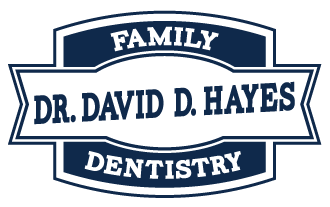Browse the following dental vocabulary to better communicate with your dentist and children.
Dental Hygiene
Bleaching
The process of lightening the teeth to remove stains. The process usually involves a chemical oxidizing agent and sometimes uses heat.
Cavity
Missing tooth structure. A cavity may be due to decay, erosion or abrasion. If caused by caries; also referred to as a carious lesion.
Crown
A crown is a single, artificial tooth that fits over a real tooth that has been specially shaped. It can also fit over a dental implant.
Decay
Term for cavities; the decomposition of tooth structure.
Dentures
A set of artificial teeth. They can replace all of one’s teeth (complete dentures) or a section of teeth (partial dentures).
Enamel
The hard calcified tissue covering the dentin of the crown of the tooth.
Extract
The process to pull or remove a tooth.
Fluoride
A mineral that helps prevent tooth decay (cavities).
Gingivitis
definition-.A disease that may cause gums to be red, swollen and bleed easily. If it is not treated, the condition will worsen and damage the tissues which hold your teeth in place.
Implant
An artificial tooth root that dentists put in the jaw bone. The dentist can put an artificial tooth (or crown) on the implant, or you can use implants to hold bridges or dentures in place.
Malocclusion
This term is used to describe teeth that don’t line up correctly in the mouth. They may be too far apart, crooked or may not come together right when you bite down.
Molars
The large teeth in the back of your mouth. We use our molars to chew food.
Oral Hygiene
Activities you do to keep your mouth clean including brushing your teeth, cheeks, tongue and dentures. They also can include using mouthwash or dental floss, or having a dentist or hygienist clean your teeth.
Then, please add below the above the video link:
Periodontal Disease
More commonly known as gum disease. It is an inflammatory disease that affects both the soft tissues (GUMS) and hard structures (BONE) which support the teeth.The gums become swollen and red due to inflammation, they are also prone to bleeding which is the body’s natural response to the presence of harmful bacteria.
Periodontitis
A severe form of gum disease which can lead to tooth loss. Plaque: A soft, sticky, thin layer of bacteria that forms on your teeth all the time.
Periodontal Maintenance
Why am I being told I have to have my teeth cleaned every 3 or 4 months instead of every six months?
Primary Teeth
This is the first set of teeth that you get when you are a child. These are sometimes called baby teeth.
Prophylaxis
Removal of plaque, calculus and stains from the tooth structures. Usually called a prophy or teeth cleaning, this procedure is performed in dental offices.
Pulp
The blood supply and nerves for the tooth.
Radiograph
A picture of the bones or teeth inside the body. It also is called an X-ray.
What is a Gingival Recession
When the gumline moves away from the visible part of the tooth, exposing the tooth root, we call this gingival recession. Without gum tissue to protect them, tooth roots become more susceptible to decay and painful sensitivity.
Root Canal
A dental treatment for a tooth infection. During a root canal, the blood supply and nerves of the tooth are removed. After that, the tooth is usually filled with a material and sealed, or is specially shaped and covered with an artificial tooth (a crown).
Sealant
A thin plastic coating that can be put on the tops of molars and premolars (the big teeth in the back of your mouth). Sealants get hard and keep food from getting packed in the surfaces of these teeth. They help prevent cavities.
Space Maintainer
A gadget used to maintain a space in your mouth. You would use a space maintainer when you lose one of your baby teeth. The space maintainer will keep a space in your mouth until a permenant tooth comes in to fill the space.
Staining
Discoloration of tooth surfaces. Can happen as the result of injury, genetics, smoking, certain medications, drinking of coffee or tea but is ultimately a part of aging.
Stomatitis
An irritation of any of the soft tissues of the mouth: lips, gums, cheeks, tongue, floor or roof of the mouth.
Tooth decay
A hole in the tooth caused by the acid in plaque. The more common name is cavity.
Tooth extraction
The removal of a tooth from the bone socket and surrounding gums.
Veneer
Thin, custom-made shells crafted of tooth-colored materials designed to cover the front side of teeth.
Whitening
Any process that will make teeth appear whiter. It can be achieved with a bleaching or non-bleaching product. Whitening options range from in-office procedures to whitening toothpastes.
Wisdom Teeth
The last teeth to come in during young adulthood. Also called third molars.

